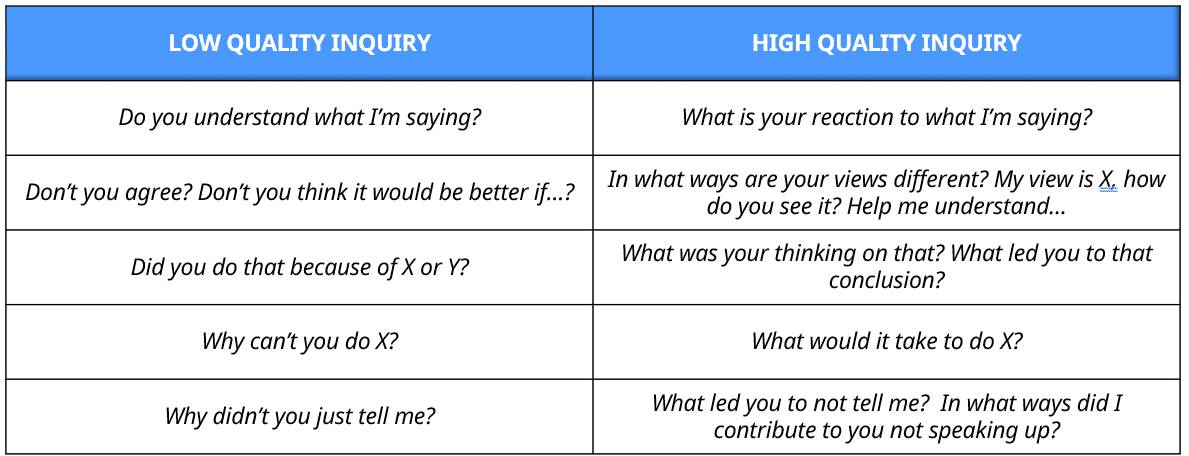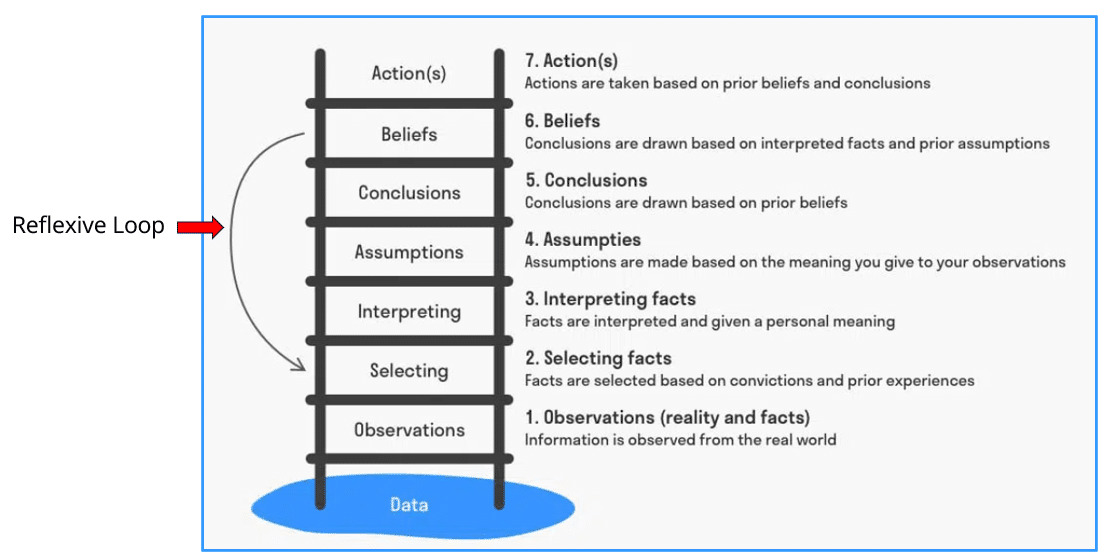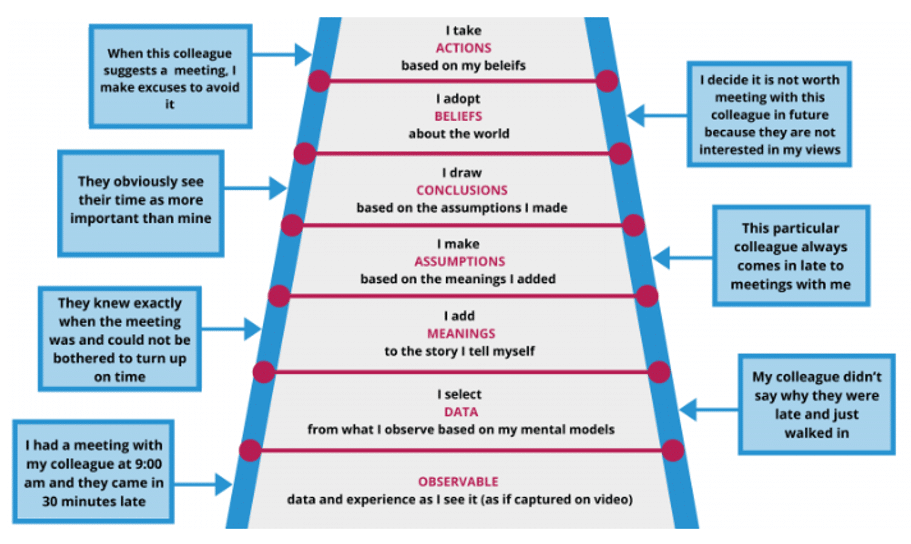As leaders evolve through their careers, they discover that the most important part of their development is to master influence. Without it, they can never be truly successful in an organization; they can never earn and sustain credibility and respect. Quite the opposite, they are the ones who are exited from the company.
What Does Influence Mean for Executives?
Influence is most often defined as the ability to
Influence and motivate others over whom they have no direct control or authority. Win support and acceptance for proposed changes and ideas through careful consideration of stakeholders’ needs and interests, through strategic relationships, and persuasive communications.
On the surface this competency appears to be relatively straight forward. But, when considering its scope and complexity, it’s so much more demanding of skill, knowledge, and disciplined behaviors.
The Core Concept of Influence
As a starting point leaders need to understand the core concept of influence. What influence is not is “the capacity to have an effect on the character, development, or behavior of someone or something.” This sets up a faulty paradigm where the intent is to simply get someone else to do what you want them to do. Visually the parallel is the attempt of controlling someone else’s actions–making them a puppet.

It also implies that influence is about an “I and You” relationship and that the “I” is all about their power, rights, and interests. It’s a very self-centered model and methodology…and typically results in very challenging and antagonistic relationships. The person on the receiving end of the “I” approach feels disrespected, ignored, and manipulated. There’s no foundation of trust or mutual benefit.
So, as a starting point a leader must see influence from a totally different perspective–one which shifts the definition of influence to “the capacity to have a positive effect with others on an issue, situation or problem.”
The goals need to revolve around developing mutual interests, mutual rights, and mutual power and ultimately about a relationship based upon “we” vs. “I and you.” From the outset there must be the absolute intent and commitment around achieving common ground and win-win outcomes.
3 Influence-Building Techniques for Executives
Stakeholder Analysis
Once this perspective of influence is established, then a leader needs to develop multiple influence techniques that enable them to build successful relationships. The first of these is a stakeholder analysis. A leader needs to explore how they can build and enhance their relationship with every key stakeholder. That means learning:
- What are the interests that matter to that stakeholder? What would they consider a win?
- What are the concerns/issues for that stakeholder? What frustrates them?
- What are their preferences around communication? In person, Zoom, email, etc.?
- What are their personality preferences? (Extraversion vs. Introversion, Thinking vs. Feeling, etc.)
- What is their leadership style?
- What are their core values?
Most of these can be discerned by asking others who have worked with them. With this information leaders can develop a profile that enables them to “surprise and delight” them in meetings. They can develop an array of unique influence strategies and tactics that will help them build stronger and more trusting relationships.
As a leader it’s all about flexing your own style and adapting to the style of your stakeholder to maximize your interactions. It’s about understanding your stakeholder and strategically determining what you have to do to maximize every interaction.
Chits Account
Among the tactics would be to focus on building a “chits account” or good will. In brief, this demonstrates an interest in the other person’s well-being. It might include remembering their anniversary with the business, the names of their children, their favorite activities outside of work, etc. It might also include acknowledging them on special dates like a birthday or a promotion date.
Last but not least, it might encompass making special efforts to appreciate their contributions and efforts. All this will create for the stakeholder the experience of being respected and valued…and more than just another employee in the company. When there’s a time when you would like their support, they will more likely provide it.
The key is for the leader to commit to the process without any expectations of “pay back” or “bartering.” The intent must be authentically around “paying it forward” and just “doing the right thing.”
Inquiry vs. Advocacy
When building your relationship with stakeholders, one the most valuable things leaders can do is to use far more inquiry than advocacy. Most everyone wants to have a voice, to be heard, and to be considered for their perspectives and opinions.
For that to happen, successful leaders lean into a key set of questions. To build trust with key stakeholders it’s critically important to inquire about their needs, their interests, and their wins and then ensure you have a robust understanding of them.
- Ask questions like…
- Help me understand…
- What would success look like for you and your team?
- Paraphrase what you have heard and check for understanding
- If I heard you correctly…you are interested in….
- Did I get that right?
- After advocating your point of view, ask…
- What am I missing?
- What else should I be considering?
It’s equally important to phrase questions so that they are open ended vs. closed ended. Open-ended inquiry is far more curious, inviting, and engaging.

Ladder of Inference
Another key area of successful influence revolves around a leader’s ability to manage the ladder of inference. The Ladder of Inference is a mental model developed by Chris Argyris that illustrates how we unconsciously move from observing data to taking actions based on our interpretations and assumptions. It highlights how our thinking processes can quickly make assumptions, and can lead to flawed conclusions and actions, especially when we fail to consider alternative perspectives or evidence.
Below is a visual overview of how the Ladder of Inference plays out.

A leader will observe some factual data and then make assumptions and inferences that lead them to beliefs and actions that may be completely inappropriate. This can lead to misunderstandings, conflict, and distrust. This is especially the case if they rigidify around their beliefs; once that happens, they fall into the “reflexive loop” which means that they will now simply look for evidence that justifies their beliefs. They are no longer able to see the actual data.
Ultimately this pattern can alienate the stakeholders, create lasting conflict, and create irreparable harm to relationships.
A simple example of the disruptive power of a ladder of inference is below:

An individual, based upon faulty assumptions and inferences will now be cutting off a relationship. This relationship could be one that is critical to their success in the organization.
The key for a leader to prevent ladders of inference disrupting their relationships and communications is to:
- Listen carefully and curiously to the perspectives expressed.
- Bring hidden reasoning into the open by asking questions.
- Ask open-ended questions, such as:
- Can you help me understand your thinking?
- What was your chain of reasoning?
- What assumptions are you making?
- What data are you basing your recommendation on?
- Paraphrase what you’re hearing: “It sounds like we’re talking about some assumptions here.”
- Your goal is to understand what’s happening in people’s heads and surface ideas that have not been articulated.
The most important strategy in managing ladders is to always focus on the data and the facts. If others make inferences or assumptions, help them clarify how they made them and if they are truly based upon the data. And of course, make sure you are not racing up a ladder and making inferences and assumptions that could undermine your efforts to communicate and to enable influence.
Conclusion
When leaders combine their philosophical understanding of influence with strategies like stakeholder analysis, inquiry, and managing ladders of inference, they will discover that they will be able to win far more support for their ideas and perspectives. Leveraging the concept of “we” and being an inclusive leader who continually adapts to the needs and preferences of their stakeholders will always encourage others to be open to a relationship, a partnership, and collaborative influence.


